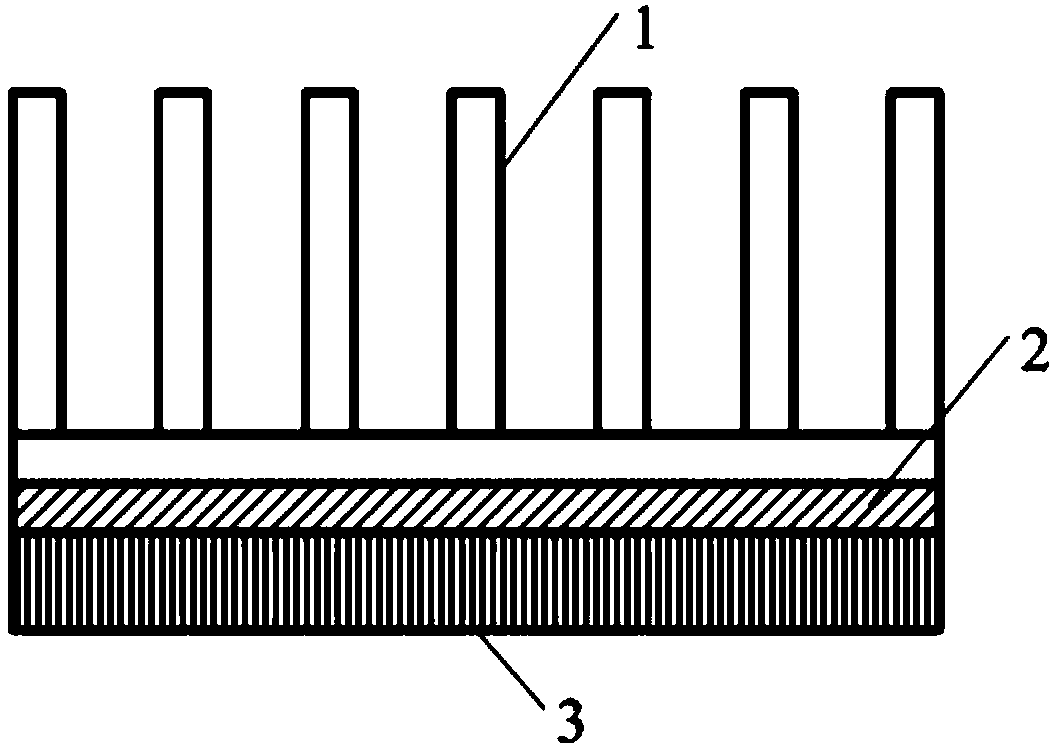Low-melting-point metal thermal-conducting paste as well as preparation method and application thereof
A low-melting-point metal, thermally conductive paste technology, applied in chemical instruments and methods, heat exchange materials, etc., can solve problems such as oxidation failure of low-melting-point metal thermal conductive paste, and achieve the effect of preventing oxidation failure
- Summary
- Abstract
- Description
- Claims
- Application Information
AI Technical Summary
Problems solved by technology
Method used
Image
Examples
Embodiment 1
[0024] Embodiment 1 A kind of low-melting point metal heat conduction paste, consists of the following components by weight:
[0025] The mass fraction of gallium indium tin alloy (the mass fraction of each component is Ga: 66%, In: 20.5%, Sn: 13.5%) is 94.9%, the mass fraction of sodium sulfide is 0.1%, and the mass fraction of sodium gallate is 5%. .
[0026] Among them, gallium indium tin alloy can maintain a liquid state at a temperature of 10°C and above.
[0027] The method for preparing the low-melting-point metal thermal paste described in this embodiment comprises the following steps:
[0028] (1) Gallium indium tin alloy is melted by hot melting method, and its mass fraction in thermal paste is 94.9%;
[0029] (2) Add sodium sulfide with a mass fraction of 0.1% and sodium gallate powder with a mass fraction of 5% to the molten low melting point metal;
[0030] (3) Stir the mixture in step (2) in an air-isolated environment with a rotation speed of 480 rpm and a st...
Embodiment 2
[0031] Embodiment 2 A kind of low-melting-point metal heat conduction paste, consists of the following components by weight:
[0032] The mass fraction of gallium indium tin zinc alloy (the mass fraction of each component is Ga: 61%, In: 24%, Sn: 13%, Zn: 2%) is 94.9%, and the mass fraction of ferrous chloride is 5% , the mass fraction of sodium gallate is 0.1%.
[0033] Among them, the gallium indium tin zinc alloy can maintain a liquid state at a temperature of 10°C and above.
[0034] The method for preparing the low-melting-point metal thermal paste described in this embodiment comprises the following steps:
[0035] (1) Gallium indium tin zinc alloy is melted by hot melting method, and its mass fraction in thermal paste is 94.9%;
[0036] (2) Add ferrous chloride with a mass fraction of 5% and sodium gallate powder with a mass fraction of 0.1% to the molten low melting point metal;
[0037] (3) Stir the mixture in step (2) in an air-isolated environment with a rotation...
Embodiment 3
[0038] Embodiment 3 A kind of low-melting point metal heat conduction paste, consists of the following components by weight:
[0039] The mass fraction of gallium-lead alloy (the mass fraction of each component is Ga: 98%, Pb: 2%) is 99.8%, the mass fraction of magnesium sulfide is 0.1%, and the mass fraction of sodium gallate is 0.1%.
[0040] Among them, the gallium-lead alloy can maintain a liquid state at a temperature of 30°C or higher.
[0041] The method for preparing the low-melting-point metal thermal paste described in this embodiment comprises the following steps:
[0042] (1) Gallium-lead alloy is melted by hot melting method, and its mass fraction in thermal paste is 99.8%;
[0043] (2) Add magnesium sulfide with a mass fraction of 0.1% and sodium gallate powder with a mass fraction of 0.1% to the molten low melting point metal;
[0044] (3) Stir the mixture in step (2) in an air-isolated environment with a rotation speed of 300 rpm and a stirring time of 120 mi...
PUM
 Login to View More
Login to View More Abstract
Description
Claims
Application Information
 Login to View More
Login to View More - R&D
- Intellectual Property
- Life Sciences
- Materials
- Tech Scout
- Unparalleled Data Quality
- Higher Quality Content
- 60% Fewer Hallucinations
Browse by: Latest US Patents, China's latest patents, Technical Efficacy Thesaurus, Application Domain, Technology Topic, Popular Technical Reports.
© 2025 PatSnap. All rights reserved.Legal|Privacy policy|Modern Slavery Act Transparency Statement|Sitemap|About US| Contact US: help@patsnap.com

